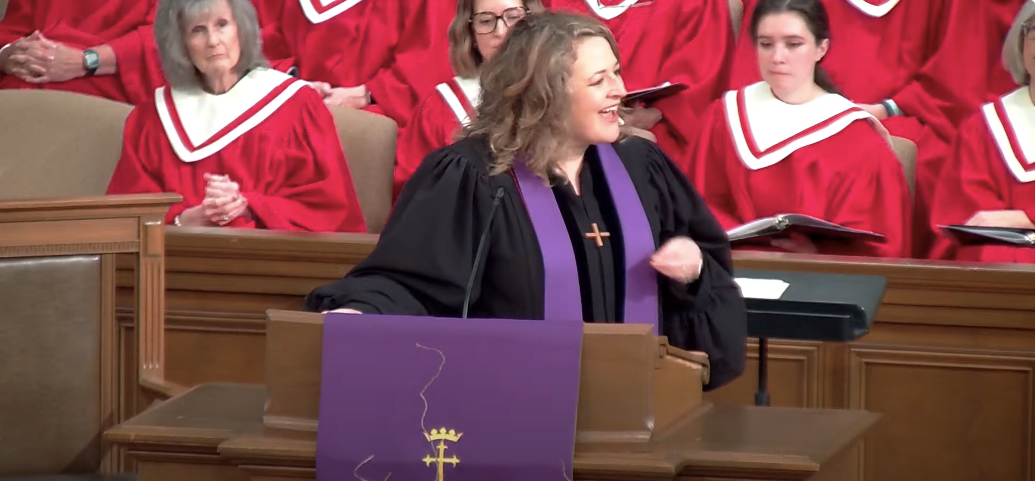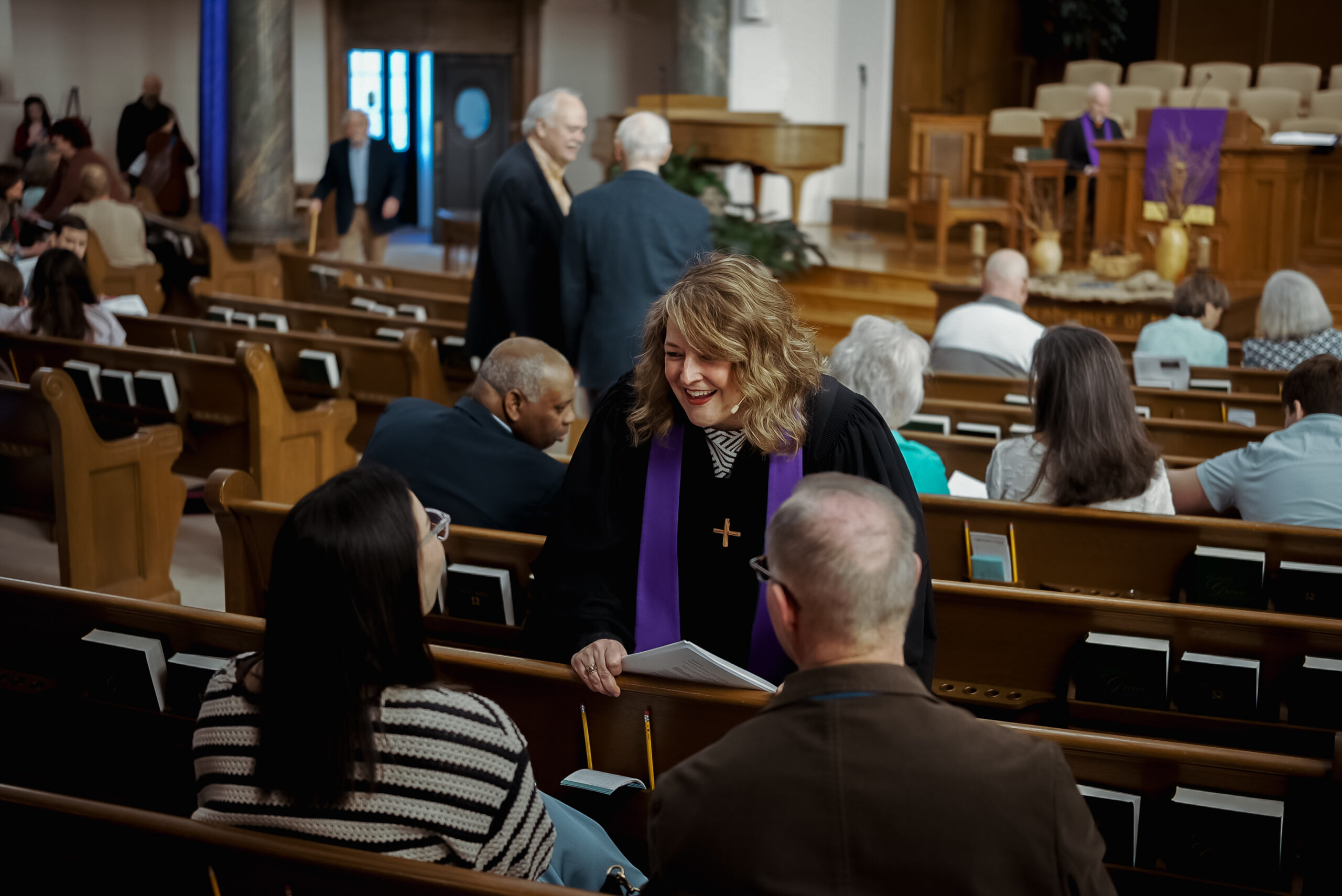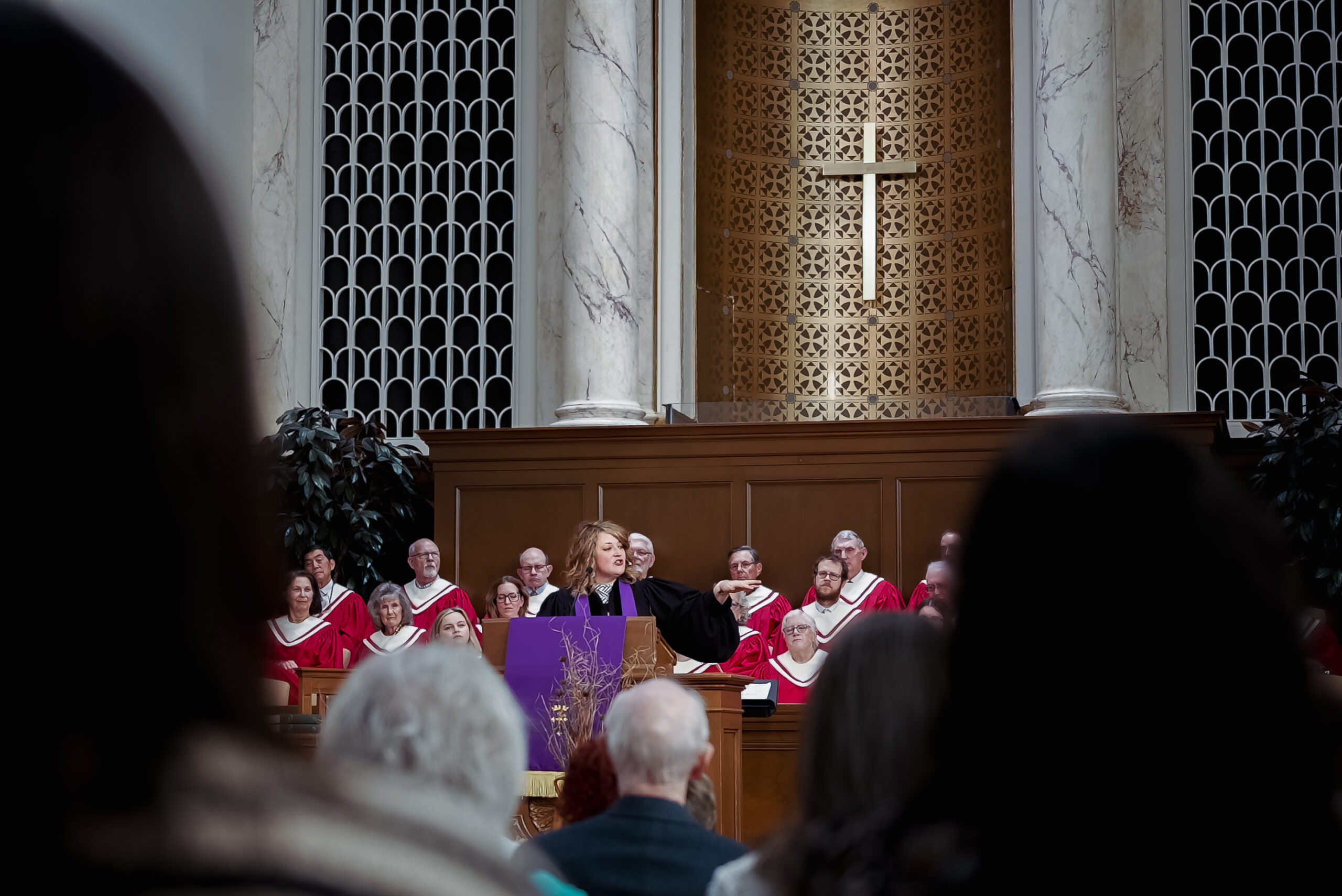I.As the story goes, it was in Budapest that a man goes to the rabbi and complains, “Life is unbearable. There are nine of us living in one room. What can I do?” The rabbi answers, “Go and get your goat, and take your goat into the room with you.” The man couldn’t believe the rabbi’s answer, but the rabbi insists. “Do as I say and come back in a week.”
A week later the man comes back looking more distraught than before. “We cannot stand it,” he tells the rabbi. “The goat is filthy.” The rabbi then tells him, “Go home and let the goat out. And come back in a week.” A radiant man returns to the rabbi a week later, exclaiming, “Life is beautiful. We enjoy every minute of it now that there’s no goat — only the nine of us.”1
II.One’s experience of life is often a matter of perspective, isn’t it?
Now I’m not just talking about emotional or spiritual perspective, I’m including physical and spatial perspective too – where we exist in the landscape of this world. Let’s take travel for instance – just think about how your experience of movement changes whether you travel by foot, by bike, by scooter, by car, by train, by boat, by plane, by hot air balloon, fill in the blank with your favorite mode of transportation! I swore I’d never think the same about a 15 mile distance after Josh and I walked that each day on the Camino de Santiago; 15 miles on foot sure is different that 15 by car!
And that spatial awareness isn’t just for a big trip, but for the regular movements of your daily life. I imagine that even your perspective about worship today is informed by the way you got here. Different, I bet, if you walked here from your downtown apartment and up the grand front stairs, or if you drove 20 minutes, maneuvered through our gravel parking lot, and up through our first floor renovations – with the very elegant patches on the wall and the exposed concrete underfoot.
Take this musing about perspective, and layer it on top of daily living, not just your moving about. How does your view change when you’re on the inside or on the outside – of a plan, a decision, a relationship, a loss? What about when you’re going about your business in the light or in the dark? How about when you’re working on something that you know and understand well, and then when you don’t? What about when you’re moving through your day quickly or leisurely? Then what about your perspective as new things come up? I bet your view on the latest news from Washington is different if you have cable news on in your home most of the day or if you only read the newspaper summary on Sundays. Or your perspective on the United States is different if you’ve lived here your whole life versus arriving as an immigrant. The laws of our land are felt differently when they directly affect you versus when they don’t, right?
Beyond these examples – what changes when you experience things up close. What about pain up close instead of at arm’s length? How about love?
Can you see it?
III.The texts and movements and considerations of Palm Sunday ask us to consider our perspective, which is where we begin today, gazing back through time and space to consider that long road into Jerusalem.
Look down with me at the road for a minute.2 It’s littered today with all sorts of items. The usual things are there — olive pits and bits of trash and dust that makes its way into every corner and crevice, stubbornly underfoot. But now their coats and cloaks lined the ground – Jesus’s disciples, that is – like a personal red carpet for the one coming to set them free. He had told them to give the shirts off their backs to the ones who’d take their coats, and here he was! Time to practice – for some perhaps.3 Some, I imagine, looked down and figured, “there are enough coats already lining the ground, so I’ll just hold onto mine.” Other gospels will tell us they waved the palms and placed those along the way too. The stones were there of course – ready to cry out lest the world stay silent, God’s creation involved in its redemption. And on top of it all, footprints. Sandaled, cracked footprints of those who followed, and of the donkey he rode.
Then as we raise our eyes, we see the faces of the crowds. Unlike the other gospels’ take on this story, the crowd here were Jesus’s disciples, not just curious bystanders. They were the ones who have been traveling with him, and learning from him, and patterning their lives on his. I imagine Simon and Andrew looking around at the scene and remembering their nets dropped on the sand. I bet Levi was thinking about how far he’d come from his tax booth when Jesus called. Maybe others Jesus had healed were with them – the Geresene demoniac here, or the hemorrhaging woman there. Maybe the boisterous former leper, and the man with the withered hand, and the past paralytic with his four friends who lowered him to Jesus, but now with no mat in sight. How might each experience this moment differently in what they see?
They were grateful travelers with him, coming to Jerusalem in preparation for Passover too. Their coats came off and were laid at Jesus’ feet, only reinforcing that they thought him to be royalty; it is what subjects would do for a king. “Blessed is the king who comes in the name of the Lord!,” they shouted. Of course they wanted a king; humans throughout history have longed for a king. One ruler. A clean line of command. Ensuring the certainty and order and logic that the human brain loves. Keeping out the riffraff, and making simple the complex, and ruling like a bully. Oh, I don’t have to tell you why humans wish for a king.
That had to have been on their mind too. The Pharisees, I mean. Look to the side over there, and you’ll see them. We don’t know why they’re worried, when they tell Jesus to order his disciples to stop. They could be grumpy and grumbling. They might fear for Jesus’ safety. Perhaps they’re anxious about the disruption he’s causing with the Roman government, and just want to get through Passover without causing a scene. Or maybe they feel their authority, not to mention Caesar’s authority, is threatened by his authority. These people are calling him a king, you see!4
Lift your eyes a bit further, and you see him. “The king who comes in the name of the Lord,” they said. You’d be right if you said he doesn’t look the part. A king? This kindly Palestinian Jew in a tunic and old sandals? The savior … on a donkey? He looks like the opposite of a king: welcoming in the riffraff especially, making meaning with mystery, and loving as his rule of law. Did you notice that rarely in the Gospel of Luke is Jesus spatially elevated? Jesus is down on the ground with the people: on the roads, in the boats, at the tables. Luke even places Jesus’s famous sermon on the plain instead of the mount, making sure his hearers understand just how grounded Jesus is. He’s with the people, you see.
So let’s not miss that when Jesus makes his entry into Jerusalem, he does so aloft. Uplifted. Seated, not walking. On a donkey, not on foot. This is, of course, in part to connect his life with the long-prophesied messiah that his people had waited for. That’s what we see, at least. But I wonder if it’s also to help Jesus prepare for what lies ahead. You can see a bit further from above, don’t you know. Not long after the parade ends, he’ll survey the city and weep:“If only you recognized the things that make for peace.” Just hear what perspective, perspective brings.
Now let’s imagine that we’re not looking at the road, or the crowd, or the Pharisees, or even at Jesus. We’re looking down on the scene – like an aerial view of a protest march that shows the crowd at hand.5 You can’t really tell which buildings are which. You sure can’t make out individual faces, not to mention which persons have nicer clothes, well-lotioned skin, the best rings. The coats look like the palms from up here. Boundaries blur, especially those lines that sharply divide nations and regions that seem so fixed down close. All the people look like neighbors down there; it would be sure hard to parse apart who is and who isn’t. Even time seems to flatten a bit. The sharp edges of all that dwells anxiously in their minds seem to soften from afar. You can see it, can’t you?
Because from above, we can see where this parade is headed. We see the way leading to the temple, where Jesus will offer his clearest, angriest critique of the religious who have so confused God’s kingdom with their own. We see where this way will wind up to an upper room, the table overflowing with nourishment both physical and spiritual. There they are, over in the corner: questioning his authority, plotting for his demise, working the systems for their own desired outcomes. We see the basins that will soon fill with water. There’s the towel he’ll tie around his waist when taking each dusty, cracked foot in his hands. Right over there is Peter, stressed and inflamed and insistent he won’t abandon his Lord. You see Judas right back there stealing away in the darkness, and if you peer close enough, you’ll see he’s got his bag of silver ready. Do you see them?
Surely you see that hill faraway. The grounds crew is already getting the crosses ready. Can’t have problems on the big day, you know. Two are already up, and his is being hammered in. Because, you remember, from above, we see where this parade is headed. We see where the way ends. What felt on the ground like a parade or a protest looks from above like a funeral procession. You see it. It’s all the perspective, you see.
Do you think there are some in the crowd that wonder where this way is headed, that are curious to get up above it like Zacchaeus once did, all so they can plan and prepare and stock up and hunker down for what pain is surely to follow the celebration? Or maybe they don’t want to plan, maybe they’re ready to distance themselves. They see the authorities grumbling in the corner. They can feel the vibe shift around them.
But then right there below, I see them – do you? There’s Mary Magdalene. There’s Salome and Joanna and Susanna. You see them? And because we have this aerial view of time, we know they’ll be right there with Jesus the rest of this way. They’ll stay the closest. With him on the road. With him in the temple, when tables overturn and justice rolls down. With him in the upper room, when he speaks of body and blood and presence and absence. They’ll not go with him to the garden – that’s a journey only he can make – but they’ll be with him at the end. Weeping at the foot of the cross. Demanding he have the dignity of a sponge of sour wine. Feeling numb with disbelief when his body is taken down. And because we have this aerial view, we know they’ll gather up their oils in the early hours of Sunday and head to the tomb while it was still dark. The way will be darkened with their tears, their faithful footprints that tell a story, their unyielding trust that no matter what they’ll find, ‘neither death, nor life, nor angels, nor rulers, nor things present, nor things to come, nor powers, nor height, nor depth, nor anything else in all creation will be able to separate us from the love of God in Christ Jesus our Lord.’
Do you see it? Could there be a better perspective to find than theirs this Holy Week? They got as close as they could to Jesus, and stayed there: from parade to passion, triumph to terror to tomb. Any impediment in their way, cleared out. This is what the clearing prepares us for. This right here. This week. These steps. This Way. These experiences with Jesus, as close as we possibly can. Life and death and welcome and memory and justice and mercy and hope and grace upon grace…
… all the while hosannas hang on our lips, and palms in our hands, and the dusty road underfoot, and the crowds around us, and the Pharisees in the corner, and our savior atop a donkey.
It all starts on the way.
Can you see it?
Will you see it?
Amen.







